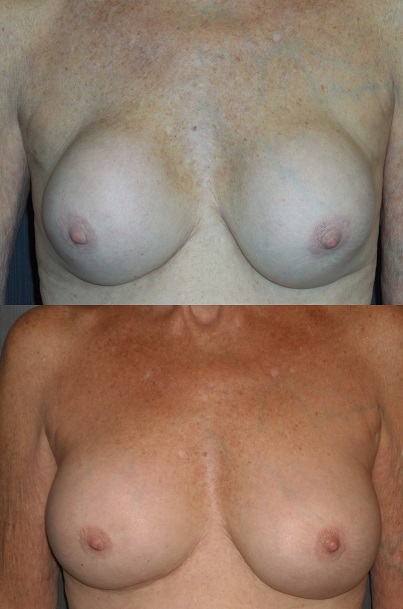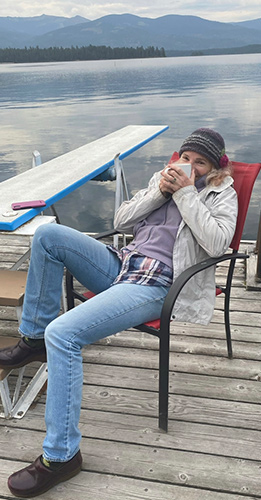My last blog discussed the difficult and frustrating problem of capsular contracture of breast implants. As with just about every problem known to mankind, prevention is the best approach. But despite doing everything correctly pre-operatively, intra-operatively and post-operatively, a small number of patients will experience capsular contracture.
First a little history: Way back when the Earth was cooling and breast implants were the newest and coolest thing, surgeons would treat capsular contracture by “popping” the breast, the so-called manual or closed capsulotomy. Here is how it worked. The surgeon would take his great big strong paws and basically mash the poor breast until there was a pop and the breast went soft as the scar capsule ruptured and released its pressure on the implant. As you can imagine, there was a lot of moaning and screaming in the exam room during this process. It wasn’t long before surgeons realized that: 1. the capsular contracture always came back, 2. this can rupture a breast implant, 3. this can cause acute bleeding and 4. women don’t like being manhandled this way. I was just starting my training in plastic surgery just as manual capsulotomy was falling out of favor. I’m happy to say that I have never done this crude procedure and it is likely that I would not have succeeded had I tried. I have teeny tiny and not-so-strong hands. I would have likely ruptured one of my tendons before rupturing a capsule or implant.
Okay, that was then and this is now. For early capsular contracture, it’s worth trying medication. A dozen or so years ago it was observed that implant patients on a certain kind of asthma medication has a very low rate of capsular contracture. These medications are leukotriene receptor antagonists and they work for asthma by reducing inflammation. And inflammation is thought to be the final common pathway to capsular contracture. The two medications used are zafirlukast and mohnelukast. Accolate and Singular are the brand names respectively. I have had several patients resolve an early capsular contracture with these medications. I have also had a few patients who did not respond to these medications

These implants were 41 years old and had a grade 4 capsular contracture. I removed them and the capsule and inserted new implants. She is shown 18 months after surgery.
Once a capsule is well established, surgical intervention is the only way to resolve it. Complete capsulectomy removes the scar tissue and then the question is how to prevent a recurrent capsule. And does it make sense to just pop in another implant right away? This is just such a difficult question because none of us has a crystal ball to tell the future. Sometimes capsulectomy and a new implant works great but sometimes another capsular contracture starts forming despite doing everything right. Sometimes we create a new pocket and make a pocket under the muscle if the over the muscle implant had a capsular contracture and vice versa. Adding Accolate or Singular makes some sense. Sometimes adding a piece of acellular dermal matrix like Strattice (which should be spelled $$$$trattice) will decrease the chance of another capsule. And whenever there are several different approaches to a difficult problem, you can be sure that none of them works every time.
The only surgery I know of that will for sure prevent another capsular contracture is implant removal and total capsulectomy without implant replacement. This definitive treatment is readily accepted by many of my older patients who are sick and tired of their nasty, rock hard and uncomfortable implants. They look forward to being implant free. For younger patients, however, this can be a very, very difficult thing to accept, especially if they were really, really flat to begin with. I have at least one patient that comes to mind who had several capsular contracture related surgeries by me and finally we just threw in the towel and removed her implants along with her capsules. Her breasts returned pretty much to their preoperative size and shape but let me tell you, her wallet was never the same. A problem with capsular contracture can be very, very expensive and result in a lot of down time – off work, off exercise, off fun. This particular patient went on to have some fat transfer several years later and did well. She and I are both glad to have her implant saga behind us.
Just writing this post makes me feel like I never want to do another breast augmentation! And then I think of the patient I saw in clinic this morning. She was very, very flat chested and was too lean to consider fat transfer. I inserted 250 cc low profile cohesive gel implants last week and this morning I could not wipe the smile off her face. I think as long as there is Victoria’s Secret, there will be a demand for breast augmentation. I am just grateful that implant technology keeps improving as does our surgical technique. Hopefully sometime in the near future capsular contracture will be of historical interest only.
Thanks for reading and I would be honored if you followed me on Instagram @sowdermd and @breastimplantsanity. Dr. Lisa Lynn Sowder



 @lisalynnsowder
@lisalynnsowder
